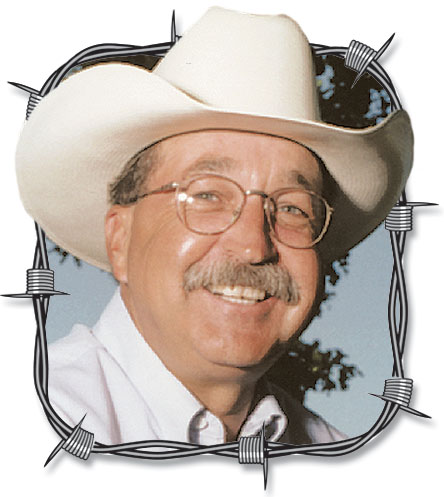
Spreading fertilizer on the pastures and hayfields is certainly a lot different today than it was in my younger days. I can remember helping my father with the task by standing on one end of the field with an empty feed sack, and stepping-off the spreader width with each pass he made in order for him to have a point of reference to return to. He did the same on the other end of the field by hanging a feed sack over the fence, but my help allowed him to only have to dismount from the tractor once, instead of twice each round.
Today, I have a GPS monitor inside the cab of my tractor that directs me to within a couple of inches of accuracy on a 60-foot, spreader width. I thought it was a great investment 10 years ago when fertilizer was $250 per ton by preventing me from overlapping my passes, or skipping strips by being too far apart. Now, with fertilizer costing over $600 per ton, it turns out to be a super-dooper investment.
Since I’ve always been a late-adopter (someone who economists refer to, when talking about people who are too cheap to quickly jump on board of new technology) I thought my old crop-farming buddy in north Missouri cropland would be impressed with my high-tech purchase.
“Do you have an auto-steer connection to your GPS?” he snidely asked.
“No.”
Laughingly, he stated, “Well, if you had that option, you wouldn’t even have to do anything but turn the steering wheel at the end of each pass.”
“I don’t think that would be too helpful, here in the hills and hollers of the Ozarks,” I explained.
“Sure it would,” he confidently replied.
“Does your auto-steer recognize boulders in the field?” I argued.
“No.”
“Does it identify trees in your path?”
“No.”
“Will it avoid sinkholes?”
“No.”
“How about swampy, wet spots?”
Sighing in exasperation, my friend replied, “No.”
I rested my case.
Technology does have its limitations, as I was reminded while traveling to Mississippi with my youngest son to help him find a place to live while he attended graduate school. My son is very intelligent (he takes after his mother), but I don’t think he ever learned to read a map and has certainly never owned one. He has grown up with computers, smart phones and GPS navigators. As we were traveling through Memphis, Zach was intently watching the screen on his phone when he said, “Dad you need to turn right at the very next intersection.”
“No, I don’t,” I responded.
In panic mode, he yelled, “Yes, you do! We’ll be going the wrong way if you don’t turn NOW!”
“Well, we’ll be very wet if we turn right, now,” as I pointed out his window, which overlooked the mighty Mississippi River.
Good thing he didn’t have auto-steer.
Jerry Crownover is a farmer and former professor of Agriculture Education at Missouri State University. He is a native of Baxter County, Arkansas, and an author and professional speaker. To contact Jerry, go to ozarksfn.com and click on ‘Contact Us.’





